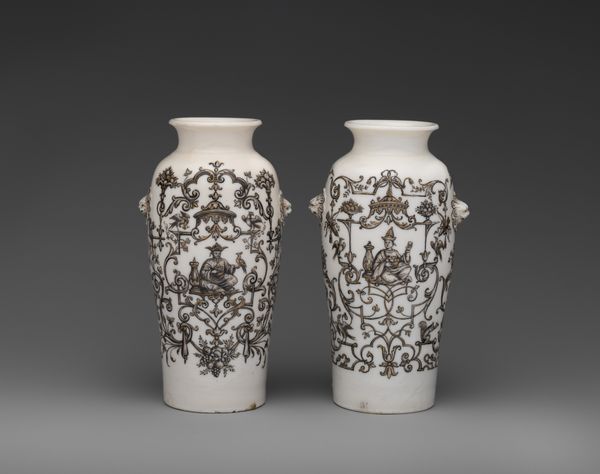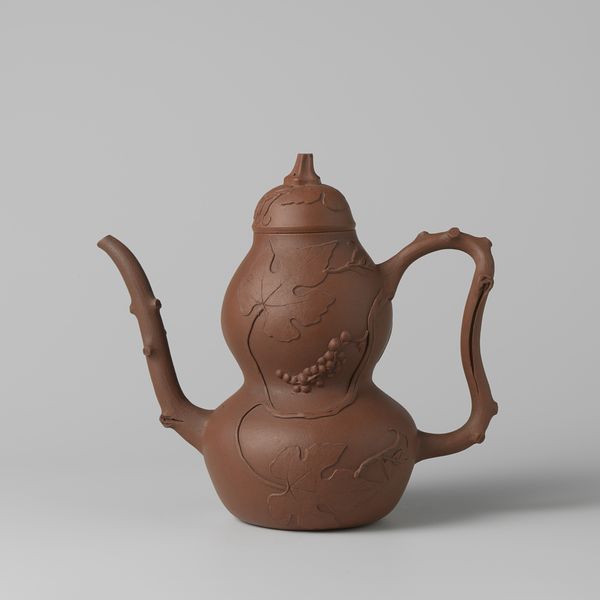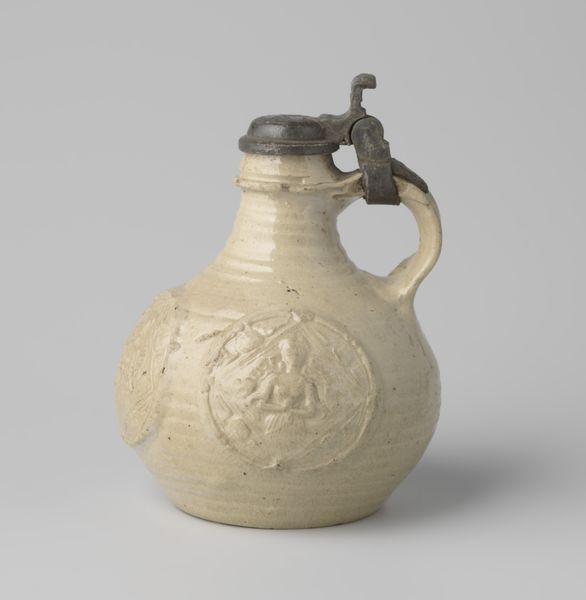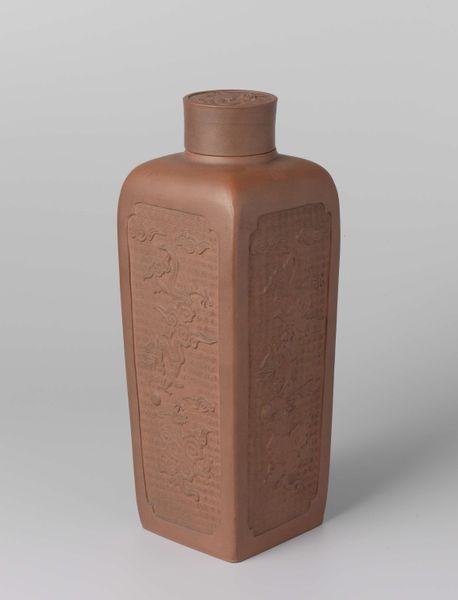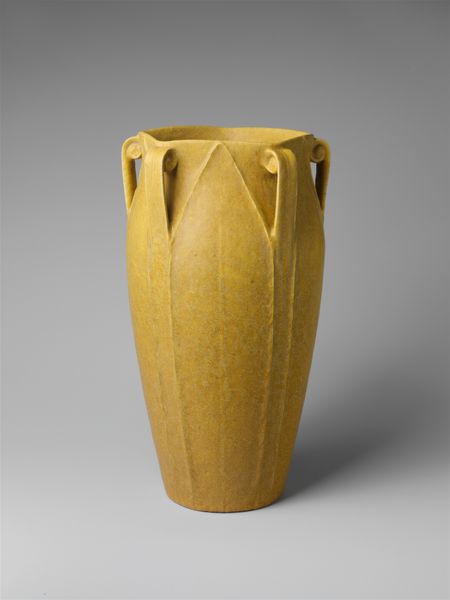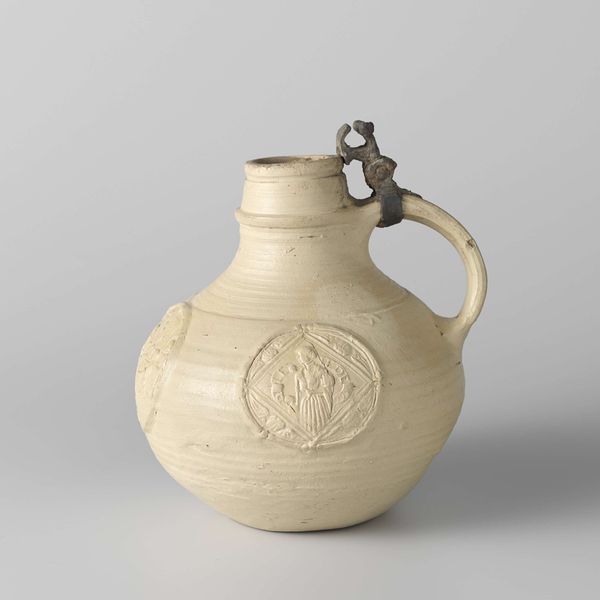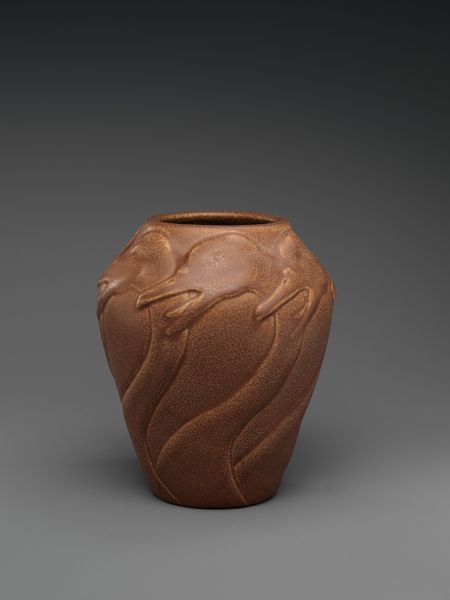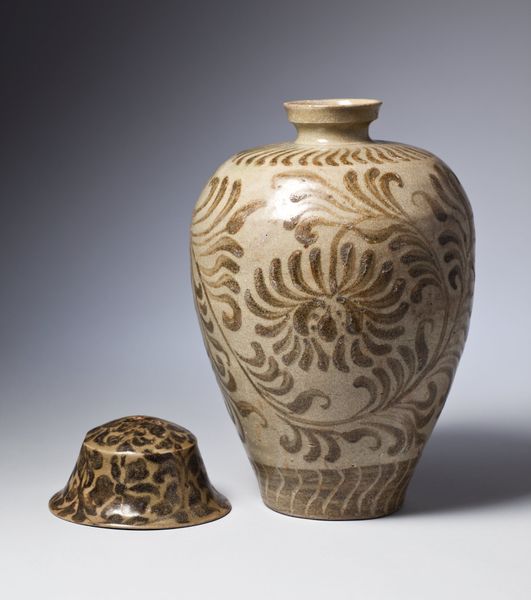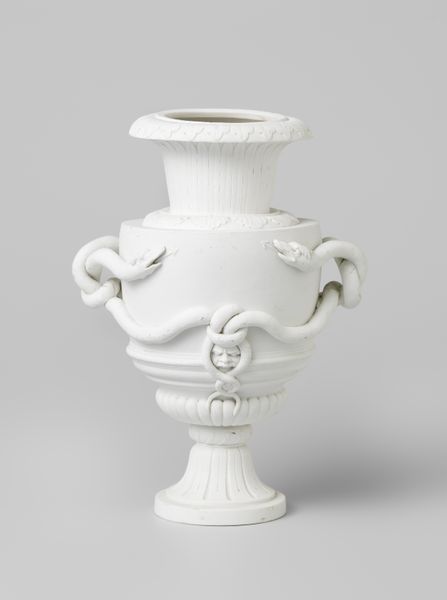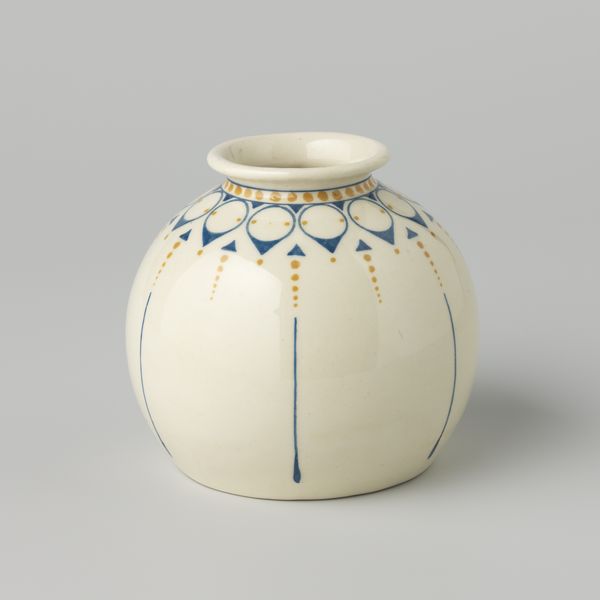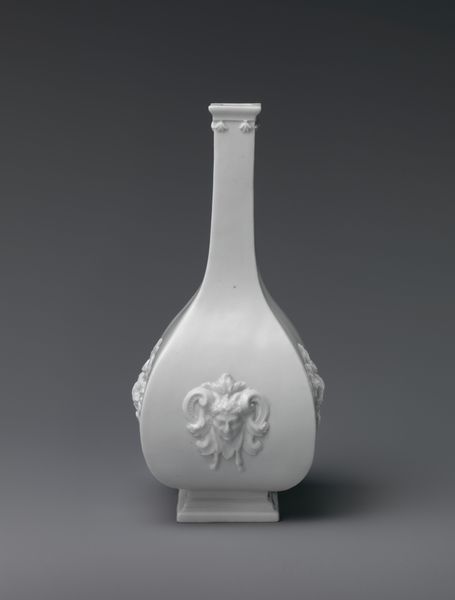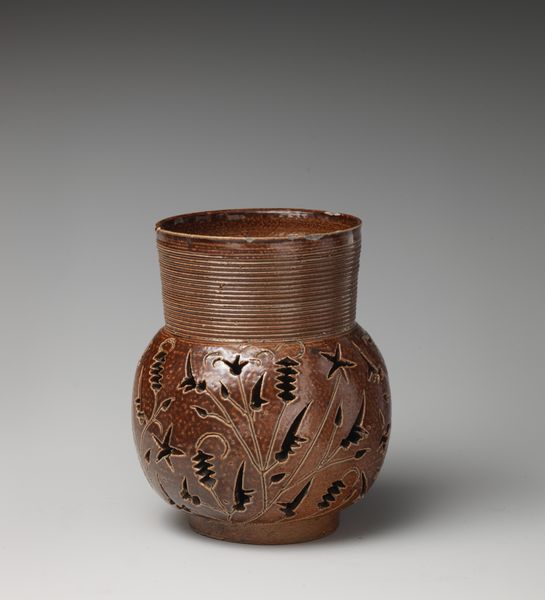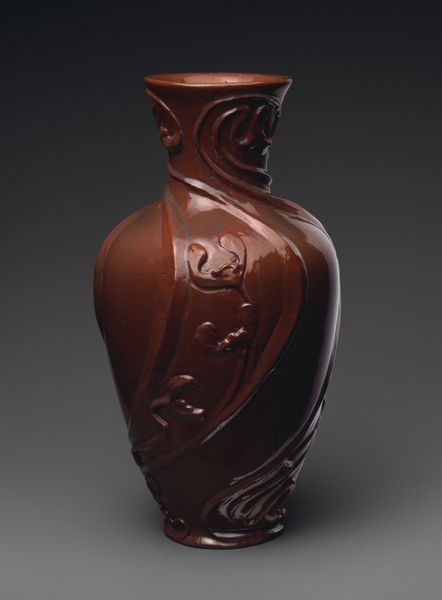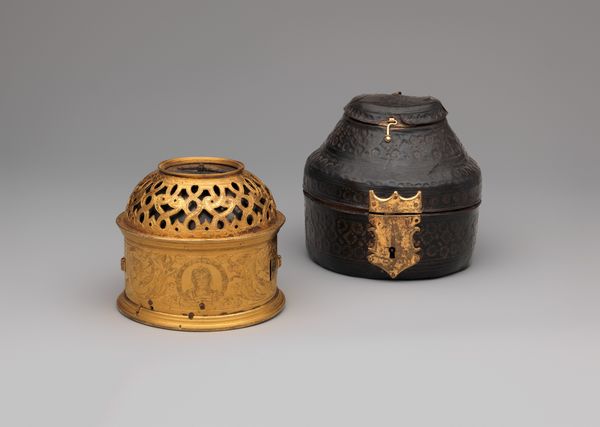
ceramic, sculpture
#
baroque
#
ceramic
#
bird
#
flower
#
sculpture
#
ceramic
#
decorative-art
Dimensions: Height: 5 in. (12.7 cm)
Copyright: Public Domain
Curator: Immediately, the contrasting textures catch my eye. The warm terracotta hue against the cool, ghostly white of the other—they practically vibrate against each other! It’s an odd juxtaposition, and yet…intriguing. Editor: Let's delve into this intriguing pairing. What we have here is a ceramic tea caddy crafted by the Meissen Manufactory between 1705 and 1718, now residing at the Metropolitan Museum of Art. The floral and avian motifs are strongly rooted in the decorative baroque tradition. Curator: Baroque and tea… I see an uneasy tension. I’m thinking about the elite circles that once possessed and consumed the tea within them—while other classes were likely in hard labor at a matching time! Editor: Precisely. Tea and porcelain, particularly pieces like this, were markers of class and status. Owning them reflected engagement with global trade, a connection that was intertwined with exploitation and the violence of colonial expansion. The flora and fauna here, likely informed by illustrations in imported books, romanticizes a reality built on subjugation. Curator: Yet, the delicate porcelain sings to the heights that human ingenuity can accomplish. Do you think the artists at Meissen were consciously commenting on this societal inequity? It almost appears tongue-in-cheek; perhaps that reading grants them too much intentionality, but nonetheless, this porcelain can stimulate so many topics in social critique. Editor: Well, as scholars, it is our responsibility to consider historical forces with attention to nuanced interpretations. While definitively assigning intention is challenging, these tea caddies, especially when seen as a pair, prompt discussions about privilege, aesthetic taste, and the historical contexts of artistic creation. They embody the complexities of the early 18th century. Curator: Indeed. One would ponder if, from today, even these objects risk embodying those same inequalities within a contemporary setting: who is speaking about it; who has access to seeing them? Editor: And through addressing just those things, perhaps that empowers us with the responsibility to keep it going. We all may appreciate this tea set better with just that.
Comments
No comments
Be the first to comment and join the conversation on the ultimate creative platform.
